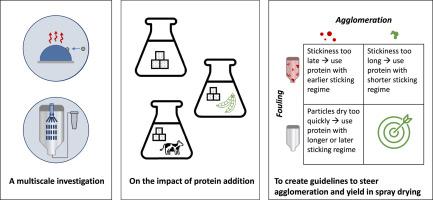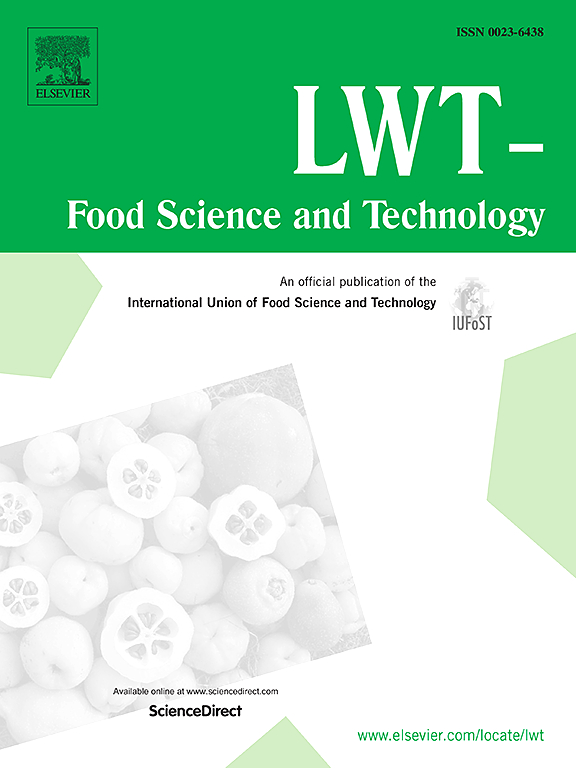关于在喷雾干燥过程中添加蛋白质以促进结块和产量的多尺度研究
IF 6
1区 农林科学
Q1 FOOD SCIENCE & TECHNOLOGY
引用次数: 0
摘要
众所周知,蛋白质干燥助剂可降低富含糖类产品的粘性,从而对喷雾干燥产量产生积极影响。然而,由于结块也取决于粘性,我们可以预期这些干燥助剂会对颗粒间的碰撞产生影响。因此,我们使用单液滴干燥和中试规模喷雾干燥实验研究了在麦芽糊精体系中添加蛋白质对喷雾干燥中的结块和产量的影响。单液滴干燥用于比较不同浓度的乳清蛋白和豌豆蛋白的粘附机制。在干燥液滴和玻璃珠之间发生强制碰撞时,添加蛋白质会增加产生团聚体的几率。这反映在注入细小颗粒的中试规模实验中,团聚颗粒的比例增加了。当液体进料中的蛋白质含量为 50 克/千克干基时,豌豆蛋白可将非团聚原生颗粒的比例从 38% 降至 22%。在试验规模的喷雾干燥中,蛋白质的添加提高了产量。在工业上,这些结果可用于指导有关结块和产量的配方。本文章由计算机程序翻译,如有差异,请以英文原文为准。

A multiscale investigation on protein addition toward steering agglomeration and yield in spray drying
The positive effect of protein drying aids that reduce the stickiness of sugar-rich products on the spray drying yield is known. However, as agglomeration also depends on stickiness, one can expect an effect of these drying aids on interparticle collisions. Therefore, the effect of protein addition to maltodextrin systems on agglomeration and yield in spray drying was investigated using single droplet drying and pilot-scale spray drying experiments. Single droplet drying was used to compare the sticking regimes of whey and pea proteins at different concentrations. Adding protein increased the chance of creating agglomerates upon forced collisions between a drying droplet and a glass bead. This was reflected in an increased fraction of agglomerated particles in pilot-scale experiments with injection of fines. Pea protein decreased the fraction of non-agglomerated primary particles from 38% to 22% when the protein content in the liquid feed was 50 g/kg dry basis. In pilot-scale spray drying, protein addition improved the yield. Industrially, these results can be used to steer formulations regarding agglomeration and yield.
求助全文
通过发布文献求助,成功后即可免费获取论文全文。
去求助
来源期刊

LWT - Food Science and Technology
工程技术-食品科技
CiteScore
11.80
自引率
6.70%
发文量
1724
审稿时长
65 days
期刊介绍:
LWT - Food Science and Technology is an international journal that publishes innovative papers in the fields of food chemistry, biochemistry, microbiology, technology and nutrition. The work described should be innovative either in the approach or in the methods used. The significance of the results either for the science community or for the food industry must also be specified. Contributions written in English are welcomed in the form of review articles, short reviews, research papers, and research notes. Papers featuring animal trials and cell cultures are outside the scope of the journal and will not be considered for publication.
 求助内容:
求助内容: 应助结果提醒方式:
应助结果提醒方式:


